Results
-
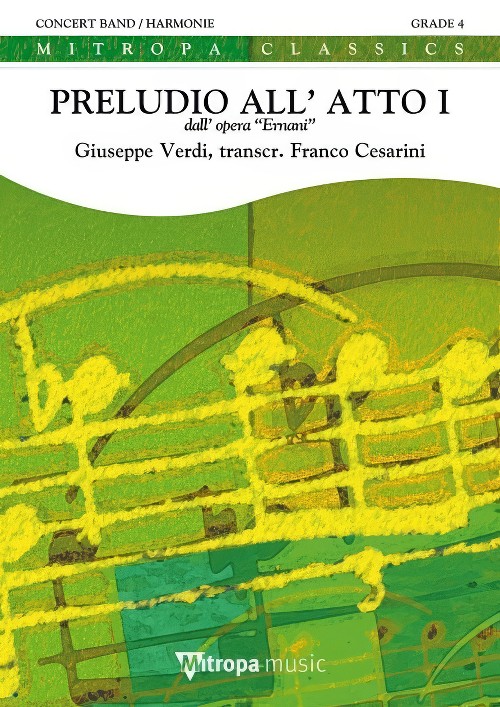 £89.99
£89.99Preludio All' Atto I (Concert Band - Score and Parts) - Verdi, Giuseppe - Cesarini, Franco
Ernani (1844), Giuseppe Verdi's fifth opera, is based on the homonymous tragedy by Victor Hugo. Verdi's success with Ernani, as well as Nabucco and I lombardi alla prima crociata, can be ascribed to two distinct ideas: the melodic idea and the patriotic idea. The melodic idea is very important to move and touch the audience, while the patriotic idea is the source of enthusiasm and emotions. Approximately ten years elapse between two similar stories: the one of the outlaw Ernani and the one of Manrico, the troubadour. In the prelude to Act I, in only three minutes, Verdi has succeeded in skilfully concentrating the main elements of the entire drama. One can clearly observe the themes of love, oath, and death.Duration: 3:00
Estimated dispatch 7-14 working days
-
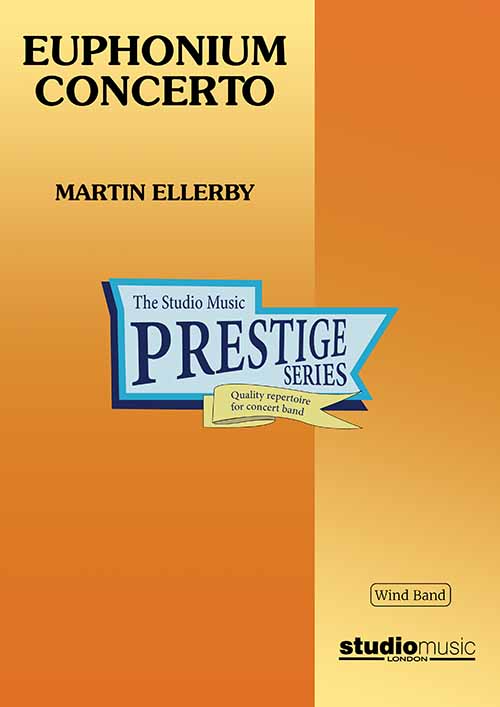 £164.95
£164.95Euphonium Concerto (Concert Band - Score and Parts) - Ellerby, Martin
This Euphonium Concerto was written between late 1994 and early 1995 in response to a commission from Steven Mead to whom the work is dedicated. It is cast in four movements and lasts a little over 22 mins:I. Fantasy: After the briefest of introductions, the solo euphonium enters with the key melodic phrase of the movement in a fast 'Tempo I'. This idea is developed up to the point where a slower 'Tempo II' breaks the argument - here the mood is reflective but it is only to be a brief interruption as 'Tempo I' returns very quickly. The opening material is then subjected to further transformation with 'Tempo II' making occasional returns en route, the distances between the contrasting tempi becoming ever closer, and the movement closes in a rather soft though definite manner.II. Capriccio: This relatively short presto movement forms a bridge between the first movement and the work's slow movement. The majority of the band parts are bright and muted with the percussion players enhancing the texture with contributions from xylophone, glockenspiel and vibraphone. Again the initial solo euphonium phrase provides the basis for almost all the movement's material. This is extremely virtuosic for the soloist and band alike and makes great play of the rhythmic possibilities of combining simple and compound music either in close proximity or together.III. Rhapsody (for Luis): A Lento movement, sitting between two different but essentially rapid ones, this provides the work's emotional core exploiting the soloist's cantabile qualities in an almost seamless fashion. Again, as will all the work's movements, the initial idea paves the way for subsequent development, eventually culminating in a passionate climax; thereafter it winds down with an affectionate backward glance towards the close of the the slow movement of the Euphonium Concerto of Joseph Horovitz, whose mark had been made indelibly on the euphonium repertoire. This movement is dedicated to Luis Maldonado who set the full score of the brass version before his untimely death.IV. Diversions: The work's variation finale is cast in 3/4 throughout though the barline is often a guideline and was seen by the composer as a challenge of metrical restraint! There is an obvious jazz feel to this movement (both rhythmically and harmonically) with a swaggering ritornello theme first announced by the solo euphonium. Thereafter follows a series of interludes and 'adjusted' returns of the main theme. A lyrical idea is allowed to enter but the underlying momentum is ever present. The band also contributes to the interludes and eventually the tempo increases towards a 'wild' and absolute conclusion.Duration: 22.30Recorded on QPRM143D Dreamscapes, Royal Northern College of Music Wind Orchestra
Estimated dispatch 7-14 working days
-
 £32.95
£32.95Euphonium Concerto (Concert Band - Score only) - Ellerby, Martin
This Euphonium Concerto was written between late 1994 and early 1995 in response to a commission from Steven Mead to whom the work is dedicated. It is cast in four movements and lasts a little over 22 mins:I. Fantasy: After the briefest of introductions, the solo euphonium enters with the key melodic phrase of the movement in a fast 'Tempo I'. This idea is developed up to the point where a slower 'Tempo II' breaks the argument - here the mood is reflective but it is only to be a brief interruption as 'Tempo I' returns very quickly. The opening material is then subjected to further transformation with 'Tempo II' making occasional returns en route, the distances between the contrasting tempi becoming ever closer, and the movement closes in a rather soft though definite manner.II. Capriccio: This relatively short presto movement forms a bridge between the first movement and the work's slow movement. The majority of the band parts are bright and muted with the percussion players enhancing the texture with contributions from xylophone, glockenspiel and vibraphone. Again the initial solo euphonium phrase provides the basis for almost all the movement's material. This is extremely virtuosic for the soloist and band alike and makes great play of the rhythmic possibilities of combining simple and compound music either in close proximity or together.III. Rhapsody (for Luis): A Lento movement, sitting between two different but essentially rapid ones, this provides the work's emotional core exploiting the soloist's cantabile qualities in an almost seamless fashion. Again, as will all the work's movements, the initial idea paves the way for subsequent development, eventually culminating in a passionate climax; thereafter it winds down with an affectionate backward glance towards the close of the the slow movement of the Euphonium Concerto of Joseph Horovitz, whose mark had been made indelibly on the euphonium repertoire. This movement is dedicated to Luis Maldonado who set the full score of the brass version before his untimely death.IV. Diversions: The work's variation finale is cast in 3/4 throughout though the barline is often a guideline and was seen by the composer as a challenge of metrical restraint! There is an obvious jazz feel to this movement (both rhythmically and harmonically) with a swaggering ritornello theme first announced by the solo euphonium. Thereafter follows a series of interludes and 'adjusted' returns of the main theme. A lyrical idea is allowed to enter but the underlying momentum is ever present. The band also contributes to the interludes and eventually the tempo increases towards a 'wild' and absolute conclusion.Duration: 22.30Recorded on QPRM143D Dreamscapes, Royal Northern College of Music Wind Orchestra
Estimated dispatch 7-14 working days
-
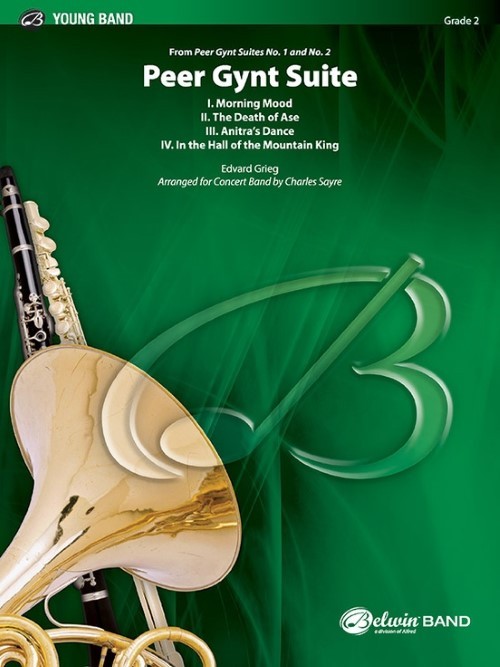 £58.50
£58.50Peer Gynt Suite (Concert Band - Score and Parts) - Grieg, Edvard - Sayre, Charles
Edvard Grieg's early musical training took place in Germany, but philosophical constraints sent him back to his native Norway, where he began what is now referred to as the Norwegian School. He is best known for his Peery Gynt Suites, No. 1 & No. 2, originally written as orchestral suites and as incidental accompaniments for Ibsen's epic drama. This sparkling scoring includes Morning Mood, The Death of Ase, Anitra's Dance, and In The Hall Of The Mountain King. Duration: 5.00
Estimated dispatch 7-14 working days
-
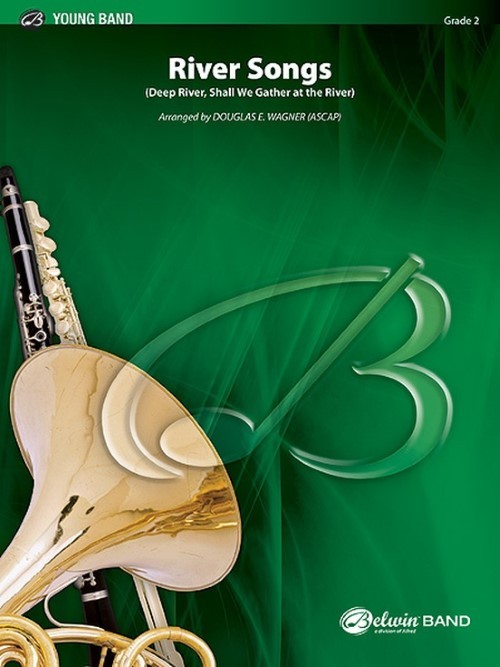 £50.50
£50.50River Songs (Concert Band - Score and Parts) - Wagner, Douglas E.
Few young people live closer together than do band members, as they work together, laugh together and cry together through the years of their involvement in musical activities. It is sad indeed when death strikes. River Songs was commissioned to commemorate the lives of two such young musicians (one white and one African-American). These two appropriate works, "Deep River," and "Shall We Gather at the River," were chosen as witness to our common bonds in this life and beyond.Duration: 4.00
Estimated dispatch 7-14 working days
-
 £104.99
£104.99Polonaise (Concert Band - Score and Parts) - Dvorak, Antonin - Van der Beek, Wil
The year 2004 marked the 100th anniversary of the death of Antonin Dvorak. In 1879 Dvorak wrote this Polonaise as a commission for the committee organising the festivities for their famous national dance festival. Many famous Czech composers wrote dances specially for this event. This Polonaise in three movements, with its fine melody lines, deserves to be more than just an occasional work, however. Wil van der Beek's concert band arrangement does justice to the original piece.Duration: 5:45
Estimated dispatch 7-14 working days
-
 £60.00
£60.00The Untitled March (Concert Band - Score and Parts) - Sousa, John Philip - Brion & Schissel
NEVER BEFORE PUBLISHED. Written shortly before his death, Sousa's "The Untitled March" was never performed during his lifetime because a page of the original was misplaced until it was located by Sousa researcher Loras Schissel in 1989. Keith Brion & Loras Schissel have restored the missing music and then edited the march to conform to the standard performance practices of that time using Sousa's original copy. Besides being an exceptional march in the Sousa tradition, this edition includes extensive performance notes and the full and fascinating story behind this historic piece. This publication is an official, authorized Sousa edition of John Philip Sousa, Inc., the family corporation.Duration: 3.40
Estimated dispatch 7-14 working days
-
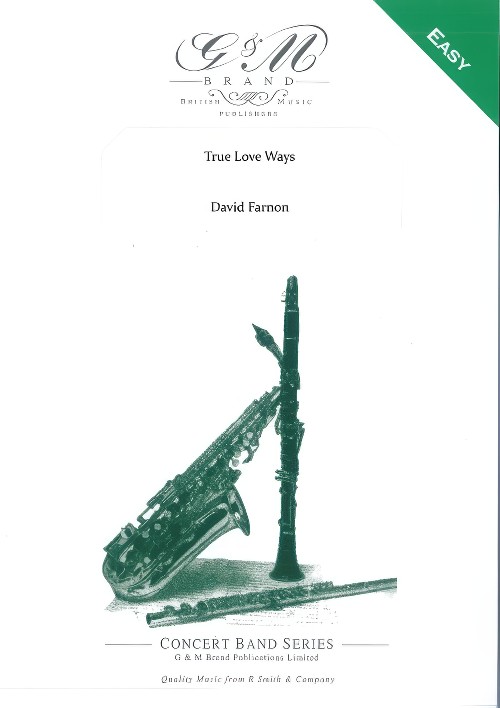 £44.95
£44.95True Love Ways (Concert Band - Score and Parts) - Farnon, David
Buddy Holly wrote one of the most important chapters in the history of rock music and created a legend. Born in Texas, his early interest was in country and western music, and his first releases were with The Crickets. Thatll Be the Day went to number one in 1957 and a string of million-selling hits followed including True Loves Ways. His death in a plane crash in 1959 cut short his career but his influence remains strong.
Estimated dispatch 7-14 working days
-
 £8.95
£8.95True Love Ways (Concert Band - Score Only) - Farnon, David
Buddy Holly wrote one of the most important chapters in the history of rock music and created a legend. Born in Texas, his early interest was in country and western music, and his first releases were with The Crickets. Thatll Be the Day went to number one in 1957 and a string of million-selling hits followed including True Loves Ways. His death in a plane crash in 1959 cut short his career but his influence remains strong.
Estimated dispatch 7-14 working days
-
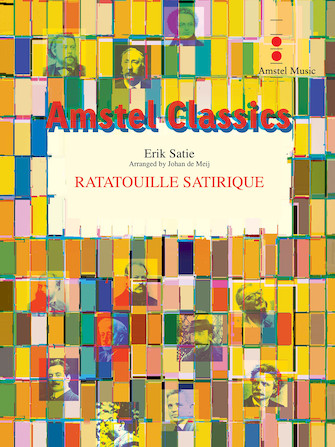 £128.00
£128.00Ratatouille Satirique (Concert Band - Score and Parts) - Satie, Erik - De Meij, Johan
Erik Satie, born in Honfleur in Normandy (France) in 1866 is undoubtedly one of the most striking personalities in the history of French music. He composed in various, often quite divergent, styles. Besides light-hearted, entertaining works he also wrote several serious compositions, among which the three ballets: Parade, Rel che and Les Aventures de Mercure. However his piano pieces, such as Trois Gymnopedies or Gnossiennes will remain his most popular compositions. Satie co-operated with almost all great artists of his time: Pablo Picasso, Jean Cocteau, Sergej Diaghilev and Georges Braque and the composers Darius Milhaud (Le Groupe des Six) and Claude Debussy. Johan de Meij made an orchestration of three short pieces by Erik Satie: I. Prelude (from: Jack in the Box) II. Reverie (from: Trois petites pieces montees) III. Marche: Le Piccadilly (1904) It was only after Satie's death in 1925 that the manuscript of the piano piece Jack in the Box was recovered. Satie himself thought he had lost the manuscript in a bus. When his flat in Arceuil was cleaned out, a small notebook was discovered behind his piano and it contained the manuscript which was assumed to be lost forever. The R?verie (De l'Enfance de Pantagruel) is an extract from Trois petites pieces montees, originally composed for small symphony orchestra. In this suite it is meant as a restful intermezzo. It is clear that, as with Milhaud (La Creation du Monde) and Debussy (Golliwogg's Cakewalk; Le Petit Negre), it is hard to deny obvious influences of jazz music in Erik Satie's compositions. Le Piccadilly, dating from 1904, displays a lot of similarities with the compositions of Scott Joplin. Duration: 7.00
Estimated dispatch 7-14 working days
